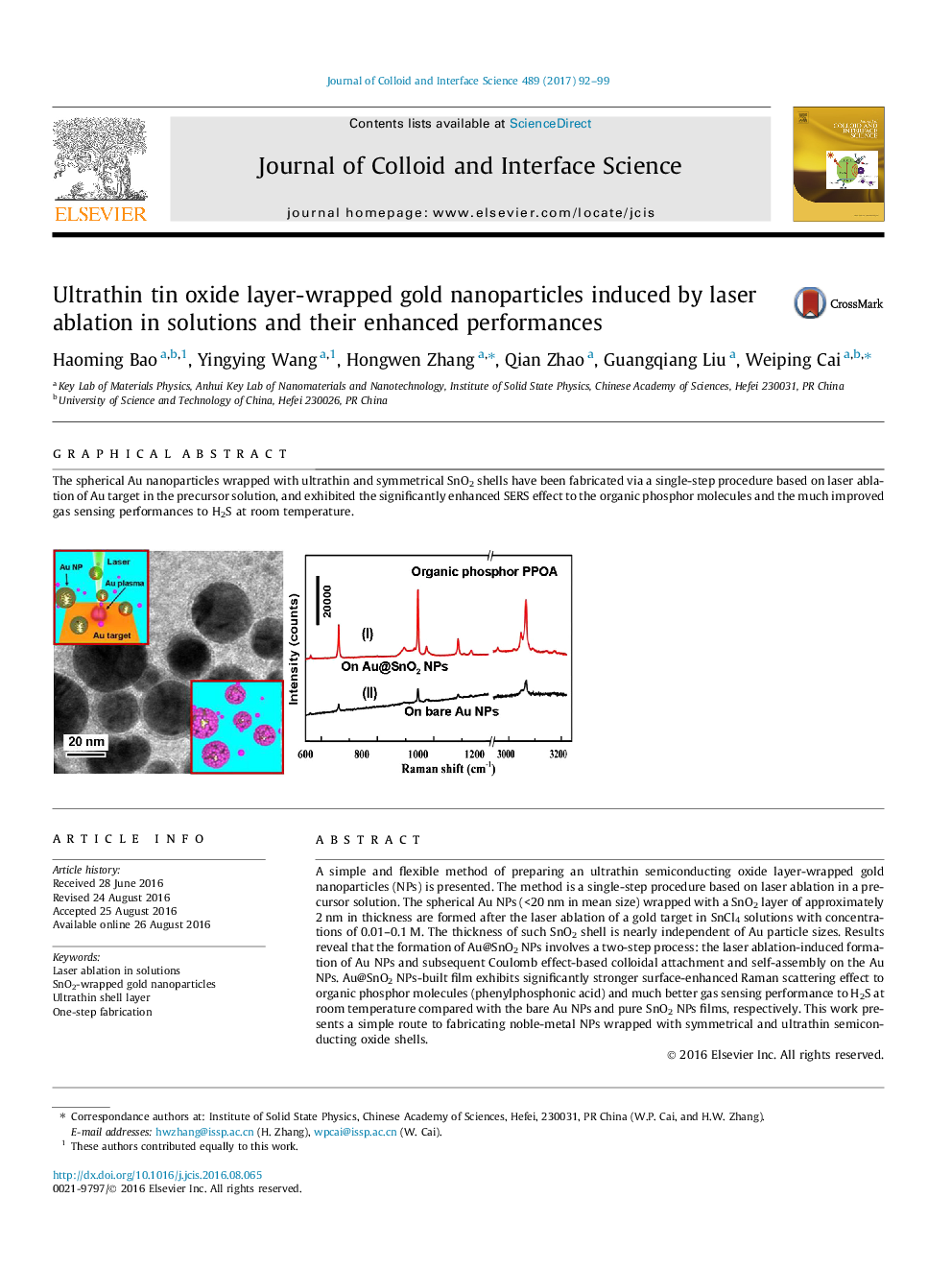| Article ID | Journal | Published Year | Pages | File Type |
|---|---|---|---|---|
| 4985348 | Journal of Colloid and Interface Science | 2017 | 8 Pages |
A simple and flexible method of preparing an ultrathin semiconducting oxide layer-wrapped gold nanoparticles (NPs) is presented. The method is a single-step procedure based on laser ablation in a precursor solution. The spherical Au NPs (<20Â nm in mean size) wrapped with a SnO2 layer of approximately 2Â nm in thickness are formed after the laser ablation of a gold target in SnCl4 solutions with concentrations of 0.01-0.1Â M. The thickness of such SnO2 shell is nearly independent of Au particle sizes. Results reveal that the formation of Au@SnO2 NPs involves a two-step process: the laser ablation-induced formation of Au NPs and subsequent Coulomb effect-based colloidal attachment and self-assembly on the Au NPs. Au@SnO2 NPs-built film exhibits significantly stronger surface-enhanced Raman scattering effect to organic phosphor molecules (phenylphosphonic acid) and much better gas sensing performance to H2S at room temperature compared with the bare Au NPs and pure SnO2 NPs films, respectively. This work presents a simple route to fabricating noble-metal NPs wrapped with symmetrical and ultrathin semiconducting oxide shells.
Graphical abstractThe spherical Au nanoparticles wrapped with ultrathin and symmetrical SnO2 shells have been fabricated via a single-step procedure based on laser ablation of Au target in the precursor solution, and exhibited the significantly enhanced SERS effect to the organic phosphor molecules and the much improved gas sensing performances to H2S at room temperature.Download high-res image (113KB)Download full-size image
